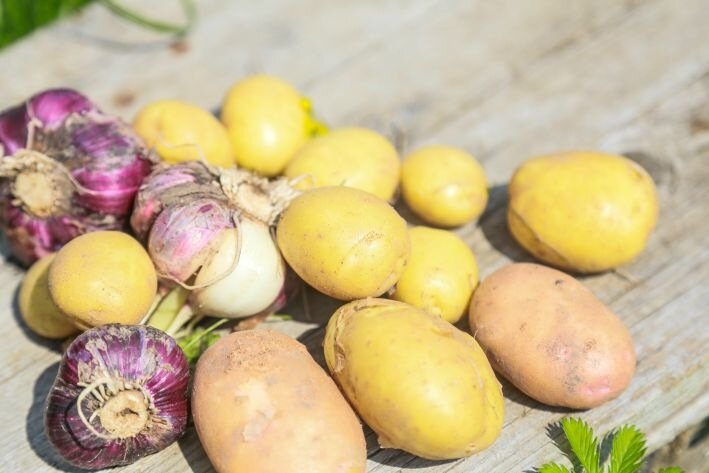Experts compete with each other to offer summer residents the most productive varieties of potatoes.
But simply going and buying a variety just because everyone praises it is a thoughtless step.
Anastasia Kovrizhnykh, an expert of the online publication "BelNovosti", a scientist, agronomist and landscape designer, told how to choose a potato variety for planting.

Appearance
Quality seed tubers should be even, smooth, elastic and firm.
And also the same size - the weight of one tuber should be approximately 40-100 grams (i.e. not less than a chicken egg).
Potato variety
First of all, you need to consider resistance to diseases, pests, bad weather, as well as storage periods.
Next, you need to inquire about what climatic conditions the variety requires, the type of soil, and other aspects.
Characteristics of the variety
1. Super elite are seeds that were obtained from material developed by breeders for the following year.
It does not contain pathogens and is expensive.
2. Elite is also a material that is reliably protected from viruses and bacteria, giving a high yield.
Seed potatoes also differ in their reproductive periods.
First reproduction (obtained after growing the elite). The harvest is good, but the potato is prone to diseases.
The second reproduction (harvested from the first reproduction). It retains all the varietal characteristics, but the yield decreases.
Third reproduction (seeds from the second reproduction harvest). Preserves varietal characteristics worse, but is inexpensive.
Ripening period
It is also important to remember that potatoes can be ultra-early (harvest in 35-50 days), early (50-65 days), mid-early (65-80 days), mid-season (80-95 days), mid-late and late (95-110 and more days, respectively).
In addition, it is important to remember that table potato varieties include four types.
Type A does not boil over, so it is used for salads and frying.
Type B is slow cooking and is good for all types of cooking, including French fries, but not for mashed potatoes.
Type C is especially good for mashing and whole, while type D tends to overcook and is not suitable for frying.
Only by taking these characteristics into account can a gardener choose the very variety of potato that will meet all his interests and capabilities.

